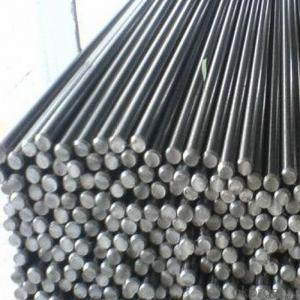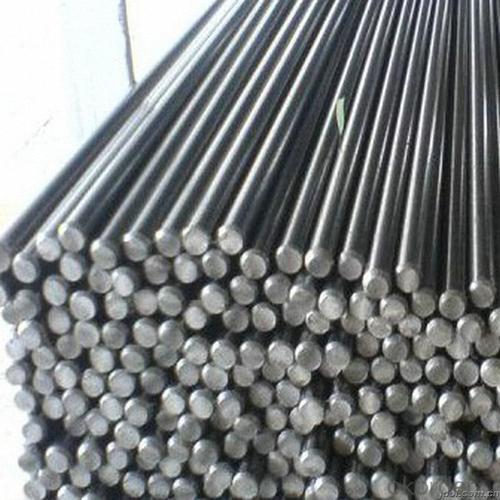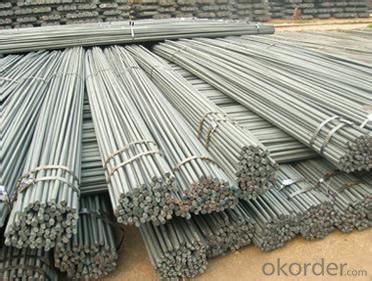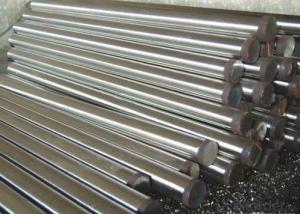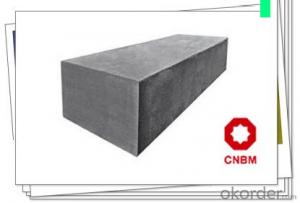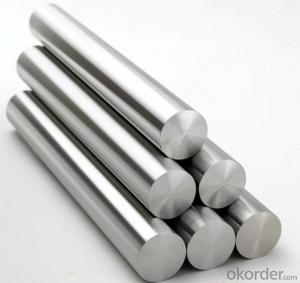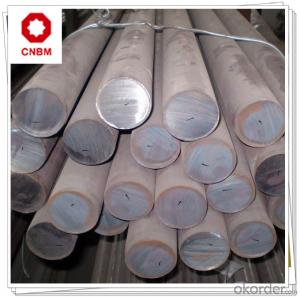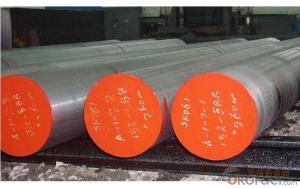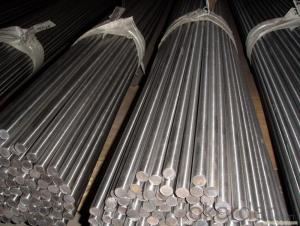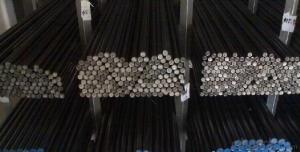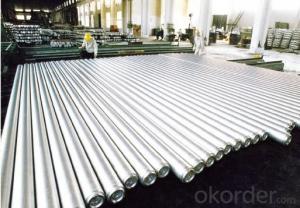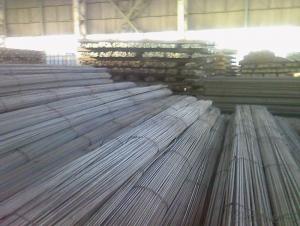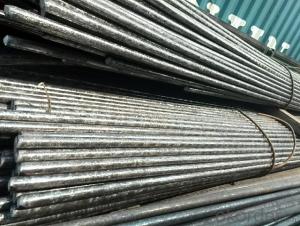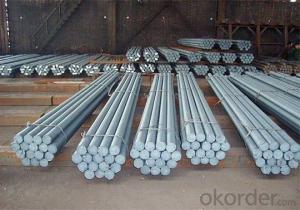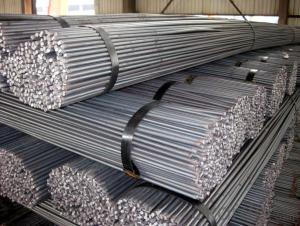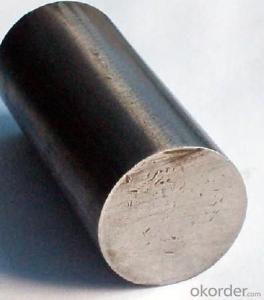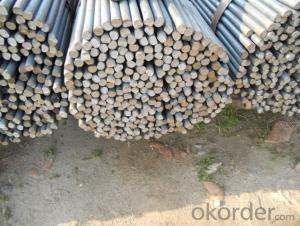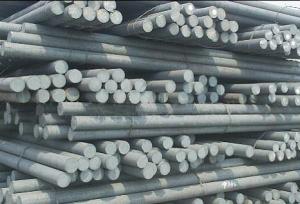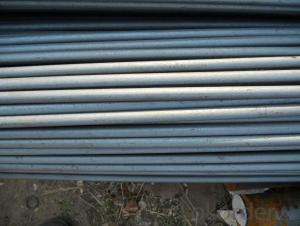Spring Steel 60CrMnA
- Loading Port:
- China Main Port
- Payment Terms:
- TT OR LC
- Min Order Qty:
- -
- Supply Capability:
- -
OKorder Service Pledge
Quality Product, Order Online Tracking, Timely Delivery
OKorder Financial Service
Credit Rating, Credit Services, Credit Purchasing
You Might Also Like
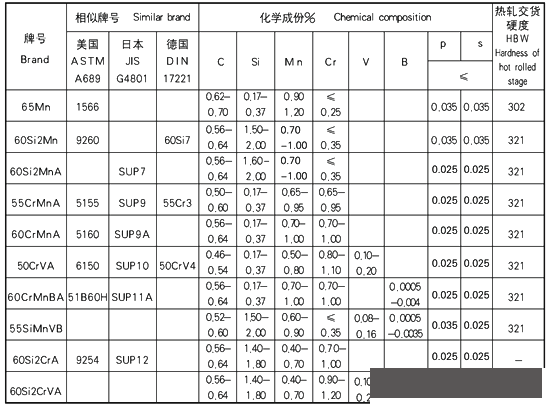
- Q: Can steel round bars be bent?
- Yes, steel round bars can be bent. The flexibility of steel allows it to be shaped and manipulated into various forms, including bending round bars into desired angles or curves.
- Q: What are the different surface defects that can be found in steel round bars?
- Some common surface defects that can be found in steel round bars include scratches, pits, cracks, scale, and decarburization.
- Q: Are steel round bars suitable for the production of axles?
- Yes, steel round bars are suitable for the production of axles. Steel is a strong and durable material that provides excellent strength and stability, making it an ideal choice for axles. The round shape of the bars allows for easy machining and shaping, ensuring a precise and functional axle design. Additionally, steel round bars offer good resistance to wear, fatigue, and impact, which are essential properties for axles that need to withstand heavy loads and harsh conditions. Overall, steel round bars are a reliable and widely used material for the production of axles in various industries such as automotive, manufacturing, and construction.
- Q: How do you calculate the deflection of a steel round bar?
- To calculate the deflection of a steel round bar, you can use the Euler-Bernoulli beam theory formula, which states that the deflection is proportional to the applied load, the length of the bar, and the fourth power of its diameter. By inputting these values into the formula, you can determine the deflection of the steel round bar.
- Q: Can steel round bars be used for making cutting tools?
- Certainly! Cutting tools can indeed be made using steel round bars. Steel is a flexible material that can be hardened and tempered, resulting in sharp and long-lasting cutting edges. By machining and shaping round bars, it is possible to create a variety of cutting tool profiles, including drills, lathe tools, milling cutters, and punches. The specific type of steel chosen will depend on the desired cutting application, as different steel alloys possess distinct properties such as hardness, toughness, and wear resistance. Heat treatment processes like quenching and tempering can further bolster the cutting performance and lifespan of these tools. All in all, steel round bars offer a dependable and cost-efficient choice for the production of cutting tools.
- Q: Can steel round bars be used for making hydraulic systems?
- Steel round bars can indeed be used for making hydraulic systems. Steel is a durable and strong material that can withstand high pressure and extreme conditions, making it suitable for hydraulic applications. Steel round bars can be machined and shaped into various components such as cylinders, pistons, and shafts, which are essential parts of hydraulic systems. Additionally, steel is resistant to corrosion, which is crucial for hydraulic systems that often come into contact with fluids. However, it is important to ensure that the steel round bars used for hydraulic systems meet the necessary specifications and requirements, such as hardness, tensile strength, and dimensional accuracy, to ensure optimal performance and reliability.
- Q: What are the typical dimensions of a steel round bar?
- The typical dimensions of a steel round bar can vary depending on the specific application and industry requirements. However, in general, steel round bars are commonly available in diameter sizes ranging from 1/4 inch to 24 inches. These dimensions are often measured in increments of 1/8 inch or 1/4 inch. The length of a steel round bar is typically standardized at 20 feet, although shorter lengths may also be available. It is important to note that these dimensions can vary significantly depending on the specific grade and type of steel being used, as well as the manufacturing process. Therefore, it is essential to consult the appropriate industry standards or consult with a supplier to determine the exact dimensions needed for a particular project.
- Q: Can steel round bars be used in the production of electrical equipment?
- Yes, steel round bars can be used in the production of electrical equipment. Steel is a versatile material with various properties that make it suitable for different applications, including electrical equipment. Steel round bars can be used to manufacture components such as shafts, connectors, and structural supports in electrical equipment. The strength and durability of steel make it a reliable choice for these applications, as it can withstand the mechanical stresses and environmental conditions that electrical equipment may be exposed to. Additionally, steel can provide good electrical conductivity and magnetic properties, which are important characteristics for certain electrical components. However, it is worth noting that steel round bars may need to undergo additional processes such as machining, heat treatment, or surface finishing to meet specific requirements for electrical equipment production.
- Q: What are the advantages of using nickel-chromium-molybdenum alloy steel round bars?
- There are several advantages of using nickel-chromium-molybdenum alloy steel round bars: 1. High strength and durability: Nickel-chromium-molybdenum alloy steel round bars have excellent mechanical properties, including high tensile strength and hardness. This makes them ideal for applications that require a strong and durable material. 2. Corrosion resistance: The addition of nickel and chromium in the alloy steel composition enhances its resistance to corrosion, making it suitable for use in environments where exposure to harsh chemicals or moisture is a concern. This corrosion resistance extends the lifespan of the round bars and reduces the need for frequent replacements. 3. Heat resistance: Nickel-chromium-molybdenum alloy steel round bars can withstand high temperatures without losing their structural integrity. This makes them suitable for applications that involve exposure to extreme heat, such as in the manufacturing of boilers, heat exchangers, and other heat-resistant equipment. 4. Versatility: The nickel-chromium-molybdenum alloy steel round bars can be easily machined and fabricated, allowing for various shapes and sizes to be produced. This versatility makes them suitable for a wide range of applications in industries such as aerospace, automotive, oil and gas, and construction. 5. Fatigue resistance: The alloy composition of nickel-chromium-molybdenum steel enhances its fatigue resistance, making it suitable for applications subjected to cyclic loading or repeated stress. This property ensures that the round bars can withstand prolonged use without experiencing fatigue failure. 6. Weldability: Nickel-chromium-molybdenum alloy steel round bars have good weldability, allowing for easy joining or fabrication processes. This makes them suitable for applications that require welding or other forms of joining, providing flexibility in design and construction. Overall, the advantages of using nickel-chromium-molybdenum alloy steel round bars make them a preferred choice in various industries where strength, durability, corrosion resistance, heat resistance, versatility, fatigue resistance, and weldability are crucial factors for success.
- Q: What are the advantages of using nickel-silicon alloy steel round bars?
- Using nickel-silicon alloy steel round bars offers several advantages. Firstly, this alloy provides excellent resistance to corrosion and oxidation, making it highly durable and suitable for various applications in harsh environments. Secondly, the presence of nickel enhances the material's strength and toughness, making it ideal for use in high-stress applications. Additionally, the silicon content improves the alloy's heat resistance, allowing it to withstand elevated temperatures without significant deformation. Overall, nickel-silicon alloy steel round bars offer a combination of corrosion resistance, strength, toughness, and heat resistance, making them a preferred choice in numerous industries such as aerospace, automotive, and chemical.
Send your message to us
Spring Steel 60CrMnA
- Loading Port:
- China Main Port
- Payment Terms:
- TT OR LC
- Min Order Qty:
- -
- Supply Capability:
- -
OKorder Service Pledge
Quality Product, Order Online Tracking, Timely Delivery
OKorder Financial Service
Credit Rating, Credit Services, Credit Purchasing
Similar products
Hot products
Hot Searches
Related keywords
